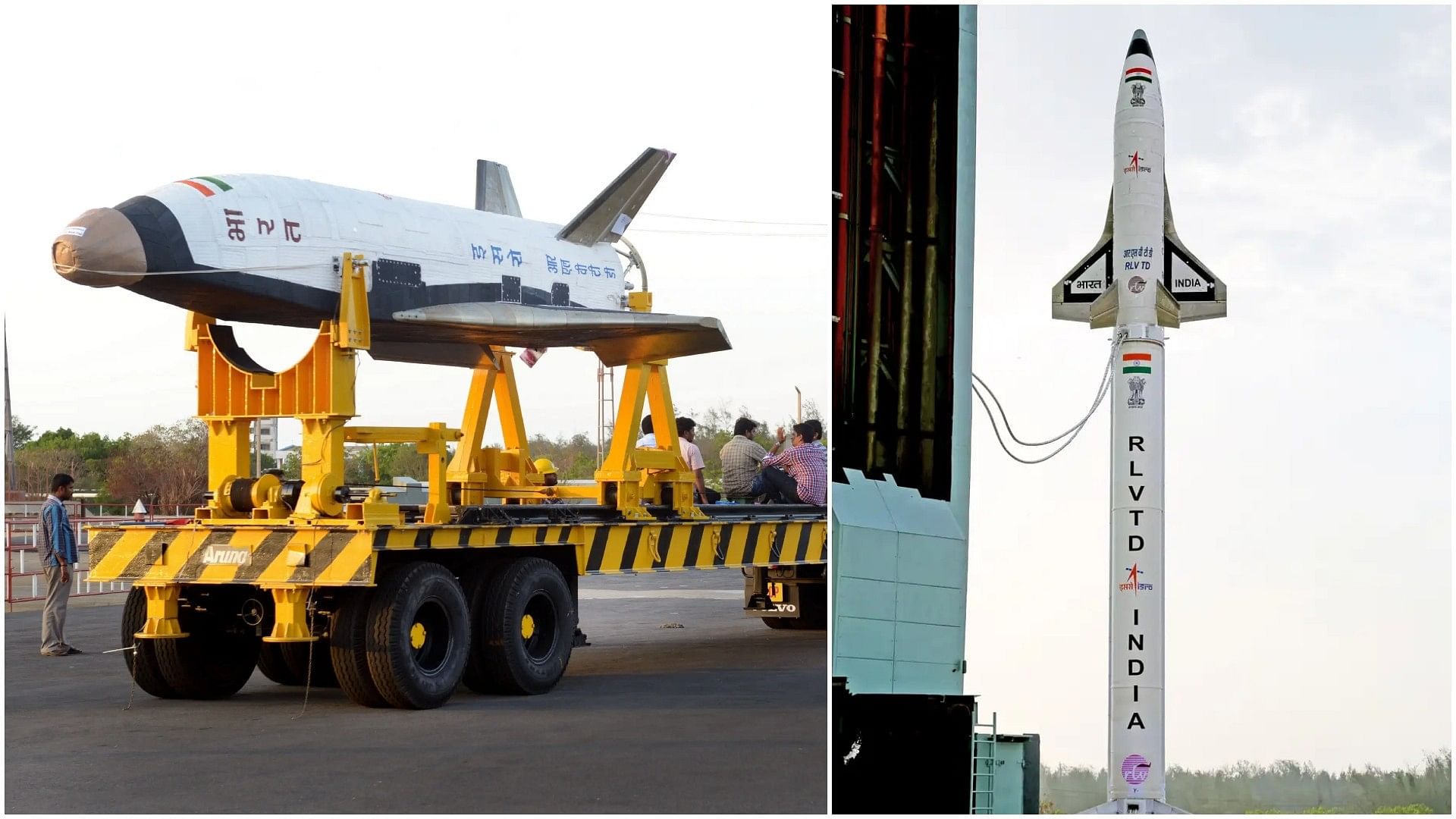
ISRO's RLV-TD.
Credit: ISRO
Bengaluru: The Indian Space Research Organisation (Isro) on Friday successfully conducted the RLV LEX-02 landing experiment, in a significant demonstration of competence in the Reusable Launch Vehicle (RLV) technology. The second in the series of landing experiments with the vehicle was conducted at the Aeronautical Test Range (ATR) in Chitradurga at 7.10 am.
The RLV-LEX-02 demonstrated the autonomous landing capability of RLV, from off-nominal initial conditions at release from an Indian Air Force Chinook helicopter, from an altitude of 4.5 km. The winged vehicle, called Pushpak, was made to undertake more difficult manoeuvres with dispersions, correct both cross-range and downrange, and land on the runway in a fully autonomous mode, Isro said.
“After release at a distance of 4 km from the runway, Pushpak autonomously approached the runway along with cross-range corrections. It landed precisely on the runway and came to a halt using its brake parachute, landing gear brakes and nose wheel steering system,” Isro said.
The mission – led by Vikram Sarabhai Space Centre (VSSC), the Liquid Propulsion System Centre, and the Isro Inertial Systems Unit – simulated the approach and high-speed landing conditions of the RLV returning from space. It re-validated the indigenously developed technologies in navigation, control systems, landing gear and deceleration systems essential for performing a high-speed autonomous landing of a space-returning vehicle, the space agency said.
Enhanced capabilities
The RLV LEX-01 experiment was conducted at the Chitradurga ATR in April 2023. Drawing on the results of the first experiment, Isro strengthened the vehicle’s airframe structure and landing gear to tolerate higher landing loads. The winged body and all flight systems used in RLV LEX-01 were reused in Friday’s mission after due clearances, thereby demonstrating the reuse capability of the flight hardware and systems.
The mission had as collaborators various agencies including IAF, ADE, ADRDE and CEMILAC. Isro Chairman S Somanath congratulated the team for the “flawless execution” of the mission. VSSC Director S Unnikrishnan Nair said the repeated success meant that Isro could master the terminal phase manoeuvring, landing and energy management in a fully autonomous mode which is critical to future orbital re-entry missions.